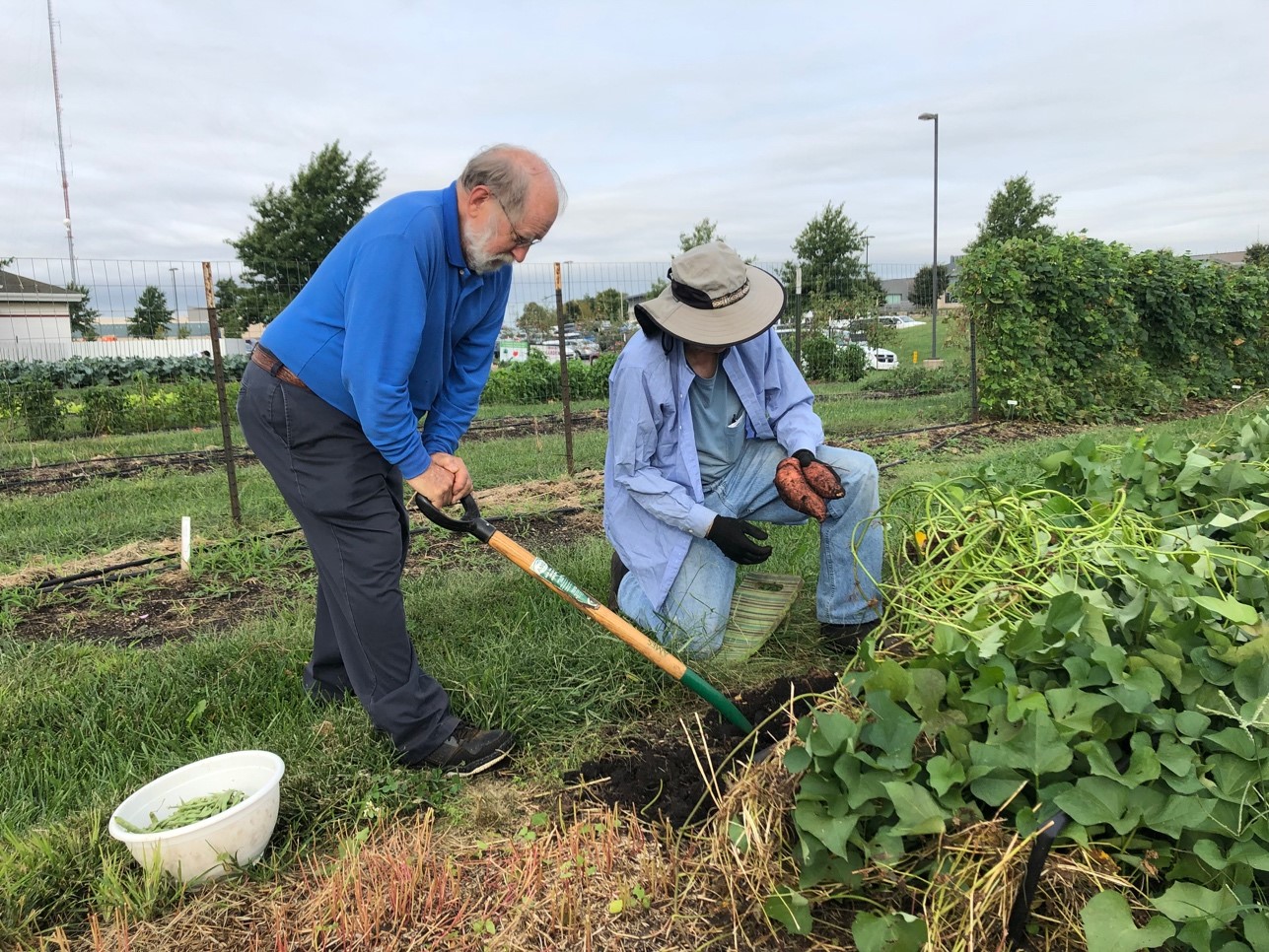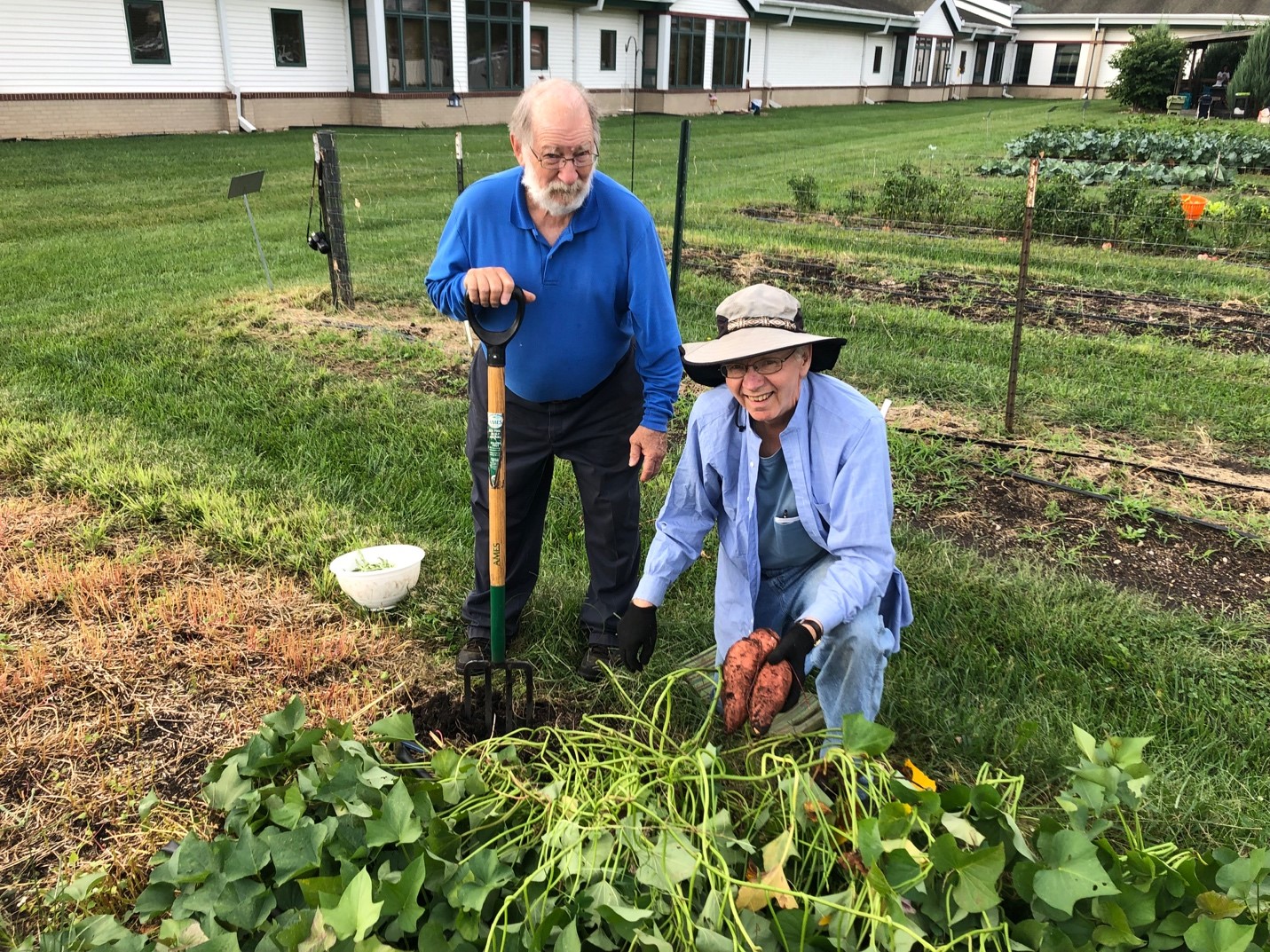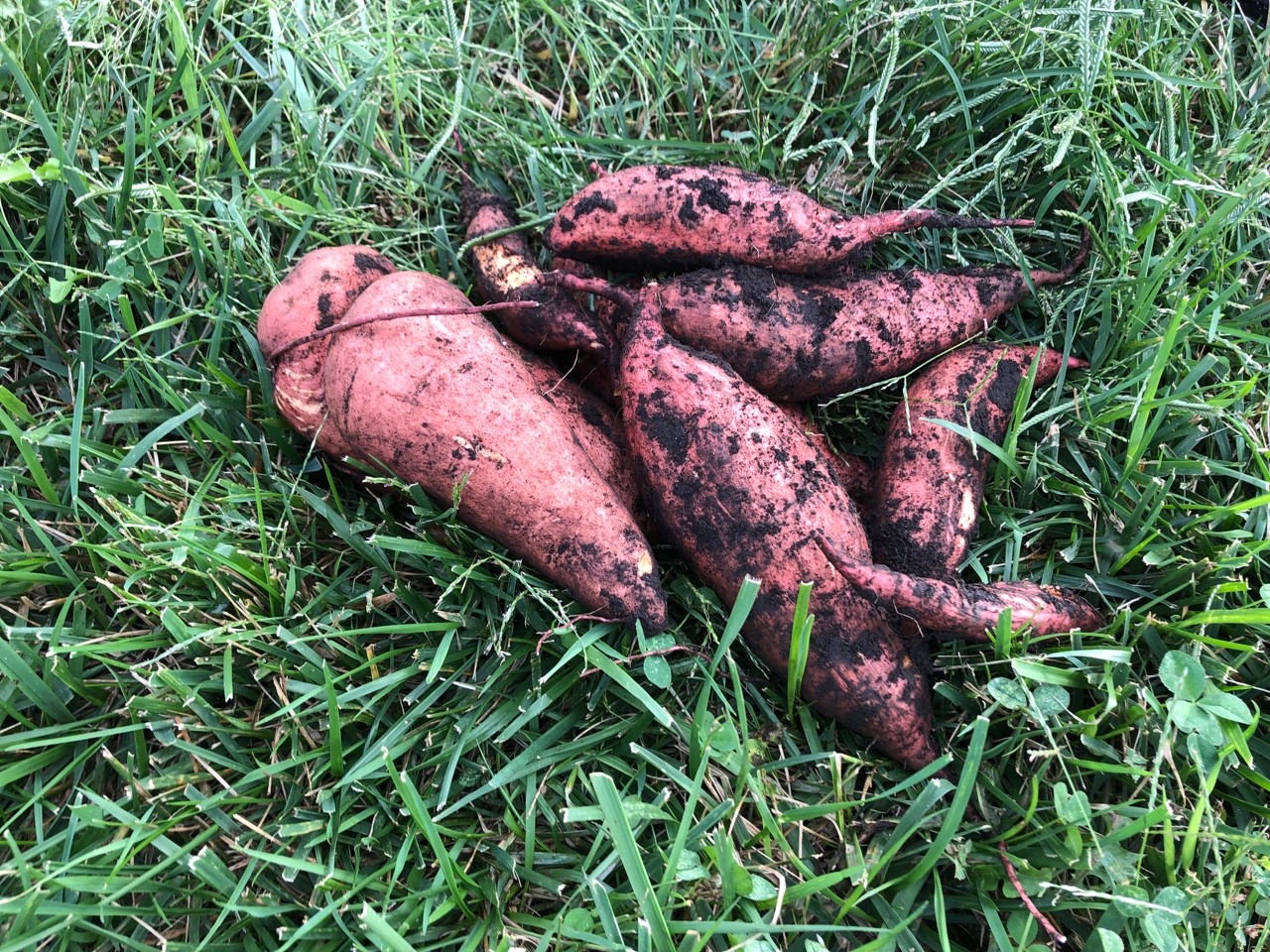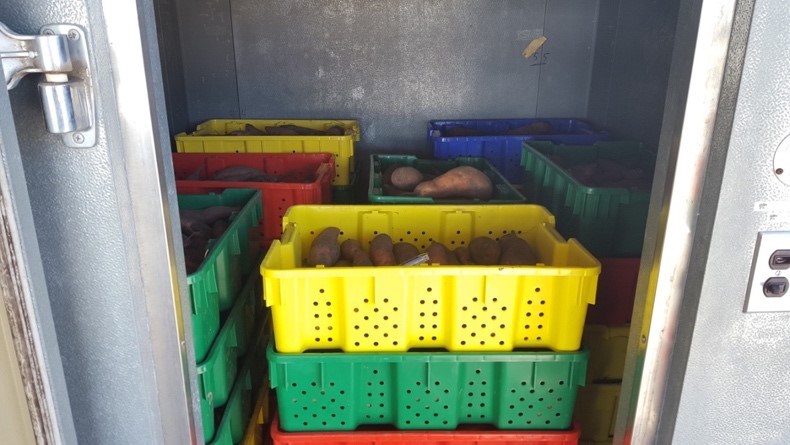The Sweet Potato: Harvest and Curing
Return to Vegetables Agent Articles
Fall is officially here and there are very few crops in the veggie garden that are more emblematic of autumn than the sweet potato (Ipomoea batatas). The little stem cuttings, known as slips, that we planted in the summer have grown into a dense mat of verdant vine and it’s time to harvest.
Sweet potato is one of the most produced crops globally and it’s increasing popular because of its high nutritional value. The leaves are edible and tender, but the roots of the sweet potato are its most commonly consumed plant part. The sweet potato is botanically related to Morning glory and this wet summer provided for more than enough bell shaped blooms to prove it.
Roots of the sweet potato develop beneath soil or growing media and on average produce 4-10 edible storage roots per plant. Depending on the cultivar and climate roots will reach mature size in approximately 110 days. It’s best to harvest when the soil is mostly dry. The roots from a plant at the end of the row can be dug out carefully and serve as an indicator of root size for other plants in the field—if done without too much disruption or damage the roots can be recovered and will continue to grow.

Picture-Teams of two harvest from rows where vines have been mowed, each uses a fork to loosen the soil around the plant before lifting from the stem and without damaging the root skins
When plants reach, maturity mowing or cutting vines close to soil line can make the harvest easier. Harvest before chance of frosts or freeze. Light frosts will turn foliage yellow; the first time you observe this change, it’s probably best to harvest roots as soon as possible. There are many mechanized options for harvest, however smaller grower will opt to dig with spading fork and can largely avoid damage to the delicate skins with hand tools.

Curing
When harvesting, and transporting it is extremely important to handle the roots with care. Excessive damage to skin and cuts into root flesh can lead to decay and loss during storage. With a pair of clean pruners remove the roots from remaining stem and try to remove as much soil from the roots without damaging skins.

To cure storage roots, place the roots in large or stackable containers and use a space heater and humidifier to achieve 85° F and 95% RH for 4-7 days. These conditions may be achieved passively from the respiration and transpiration of the roots in an enclosed storage area like a closet. Lower temperature curing will just increase the time required to heal wounds and set skin. Curing greatly improves shelf life and increased sugars (better flavor). It is typically recommended that washing or spraying with water only be done after curing and just prior to sale or consumption. Depending on cultivar the root skins will not be truly set until 4-6 weeks after harvest so be careful while washing. Following the cure, roots should be stored at 55° F and 90% RH. Roots can be stored for more than 10 months in these optimal conditions. Whether in curing or cold storage, roots need air flow and gas exchange, in an enclosed space this may require regular venting.

Picture 4-Walk in cooler with refrigeration turned off, used with space heater and humidifier to cure roots

